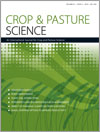The effects of water deficit stress and recovery on growth, photosynthesis, physiological and biochemical parameters were investigated in the cultivated Beta vulgaris and in two Tunisian provenances (Soliman and Enfidha) of its wild relative B. macrocarpa. Seedlings were cultivated for 4 weeks under optimal or limiting water supply (respectively, 100% and 25% of field capacity, FC). After 2 weeks of treatment, a lot of stressed plants were rehydrated to 100% FC. In the Control, B. vulgaris was more productive than B. macrocarpa, whereas Enfidha provenance showed the highest biomass production (1.6- and 3-fold compared with B. vulgaris and Soliman, respectively), under water deficit stress. A partial re-establishment of growth occurred in both species upon recovery at 100% FC. The sensitivity of B. vulgaris and Soliman provenance to drought was associated with the disturbance of leaf water status and the sharp decrease in net CO2 assimilation (–66% and –82% as compared with the Control, respectively). On the contrary, the better behaviour of Enfidha provenance was related to its better photosynthetic capacity and leaf relative water content, along with a higher accumulation of amino acids (proline, glycine, and glutamine) implied in the osmotic adjustment. Leaf hexose concentration increased significantly under drought stress in both species whereas leaf sucrose concentration declined only in drought-stressed B. vulgaris and Soliman provenance. Leaf glutamate dehydrogenase activity increased under water deficit in both species despite to a higher extent in B. vulgaris. As glutamate dehydrogenase is implied in catabolism of glutamate to oxoglutarate, it might contribute to provide stressed plants with carbon skeletons.
Enfidha provenance of the spontaneous species B. macrocarpa could be used in the marginal arid ecosystems in order to limit the deficit in fodder and to improve the pastoral value of these regions. In addition, this species could serve as a source of genes for genetic improvement to water deficit stress.





